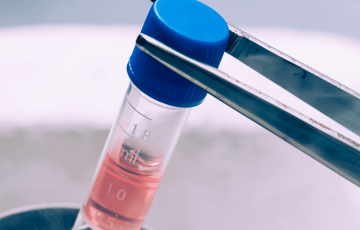SMP is your number one source of unbiased infertility information.
Are you considering In Vitro Fertilization (IVF) for the first time? Given the high cost of IVF, you’re probably wondering what the chances of having a successful IVF pregnancy are.
Thanks to advances in technology, IVF has become generally successful. If we include women of all ages, the odds of a live birth are between 34 and 42 percent throughout three cycles.
IVF Success Rates
IVF success rates are reported according to a woman’s age since as a woman gets older, the IVF success rates go down if she’s using her own eggs.
- For women younger than 35, the percentage of live births per egg retrieval* is 54.4 percent.
- Women ages 35 to 37, the rate of live births per egg retrieval* is 42 percent.
- For women ages 38 to 40, the rate of live births per egg retrieval* is 26.6 percent.
- Women ages 41 to 42, the rate of live births per egg retrieval* is 13.3 percent.
- Ages 43 and up, the percentage of live births per egg retrieval* is 3.9 percent.
*It’s important to note that these numbers are not per cycle, these are the IVF success rates nationally, when using non-donor eggs, per egg retrieval.
One Cycle vs Multiple Cycles
According to a study, women who conceived with IVF treatment went through an average of 2.7 cycles. Additionally, the odds of success for women all ages after three IVF cycles were between 34 and 42 percent.
Most doctors recommend that you plan on doing multiple cycles since this increases the odds of a successful pregnancy
Wondering what your odds for success with IVF are?
IVF success varies from person to person, and it depends on many different factors. Some factors you can control: maintaining a healthy weight, staying away from cigarettes, whether or not donor eggs (or sperm) will be used, and the competency of the IVF clinic or lab. However, there are others you cannot control, like genetics, your age, prior pregnancies, etc. Read more on the five success factors to consider when going through IVF.
Looking at national averages will give you an idea of the success rate you might want to expect, but it won’t be an accurate predictor of your probabilities.
The good news is that the Society for Assisted Reproductive Technology (SART) has created a patient predictor tool that will give you more personal odds depending on specific factors you need to input like your age, height and weight, how many pregnancies you’ve had, your cause of infertility, and whether you plan on using your own eggs.
The best part of all? The tool is entirely free to use.
Also, you can visit SART’s website to get a more accurate number for the national success rates for IVF or find specific rates for individual clinics.
Having said this, IVF success rates are always unique to the individual and there are some variables that you can manipulate in order to improve your odds.




